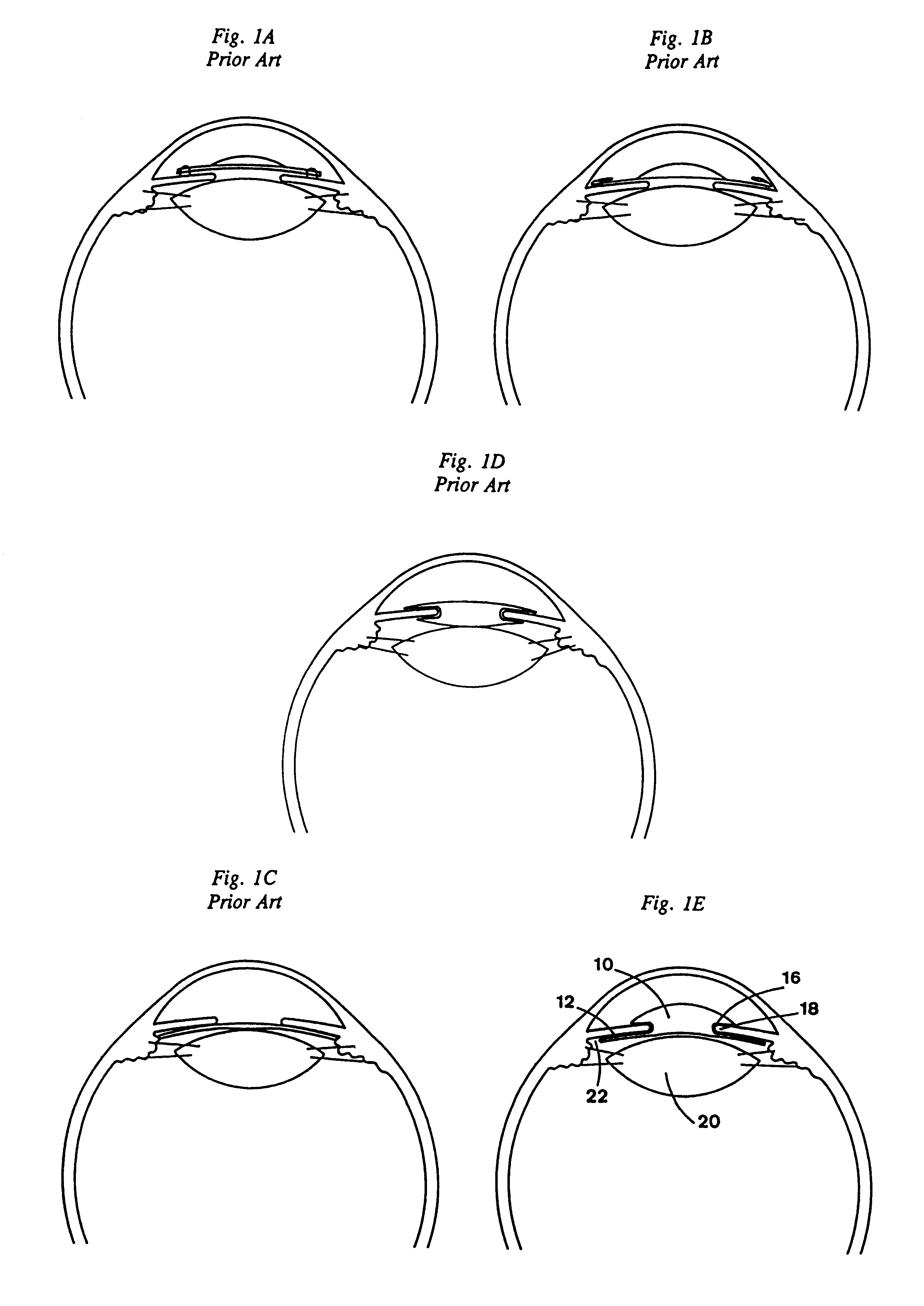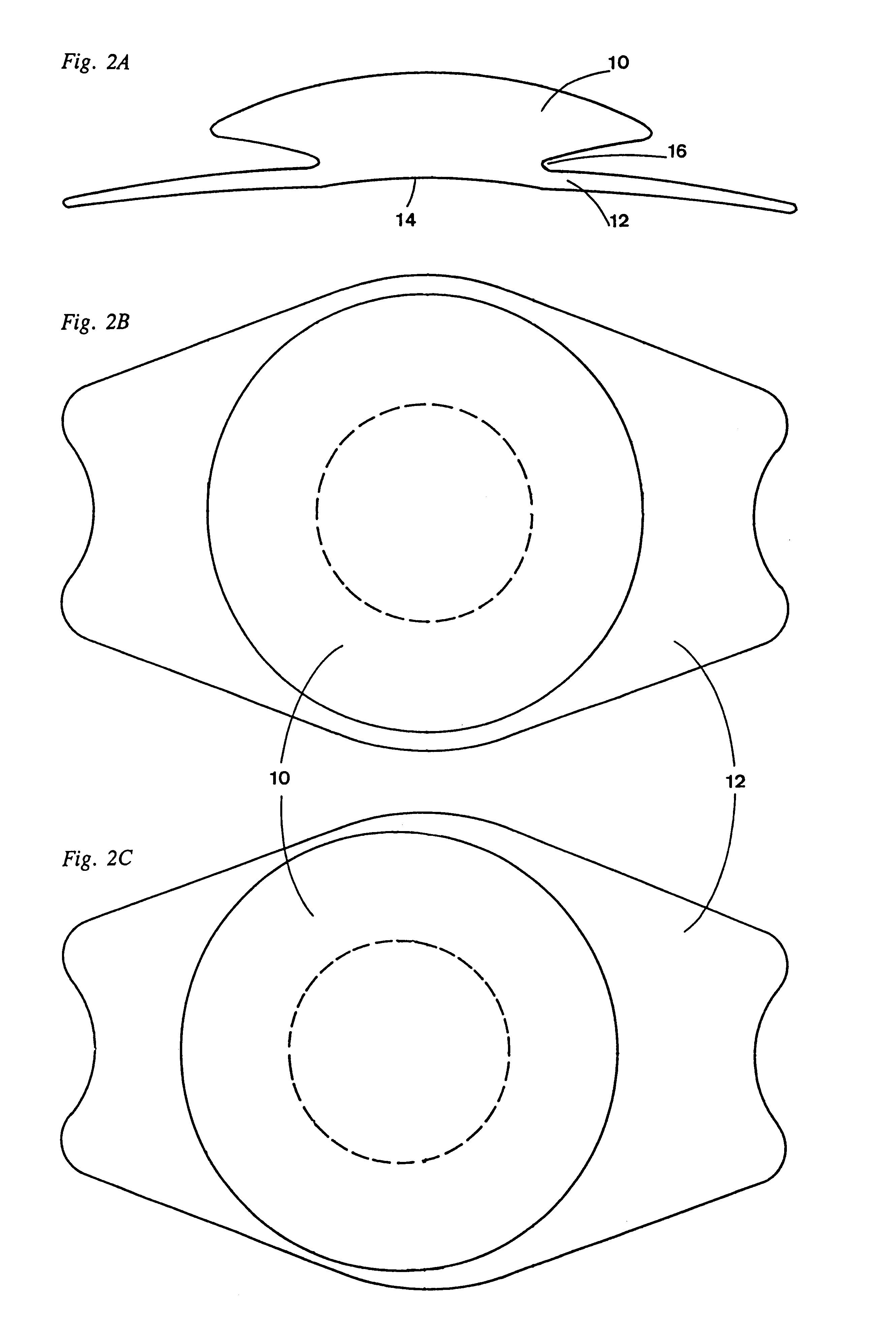Intraocular lens with accommodative properties
a technology of ocular lenses and ocular lenses, applied in intraocular lenses, eye implants, medical science, etc., can solve the problems of inability to continuously adjust the focusing range in vivo, the natural ability of human lenses to change their shape and therefore refractive power, and the gradual loss of age-related ability to adjust the refractive power of all cited prior art artificial lenses
- Summary
- Abstract
- Description
- Claims
- Application Information
AI Technical Summary
Benefits of technology
Problems solved by technology
Method used
Image
Examples
Embodiment Construction
FIGS. 1A, 1B, 1C and 1E illustrate the differences in positioning of the new lens in the eye versus the cited prior art. With the new lens design, the anterior optical part is placed before the iris, the pupil margin that contains the sphincter muscle of the iris is inserted in the circular and compressible groove, and the posterior haptic part is placed behind the iris and before the natural lens in the sulcus delineated by the ciliary body and iris. This new streamlined lens design, according to FIG. 1E, permits a more physiologic centration within the pupil and offers the advantages previously mentioned.
The preferred embodiment of the optical part 10 of the intraocular lens is circular and its anterior surface is convex, although other configurations and shapes may be employed. The optical part 10 of the intraocular lens may be constructed of any of the currently used deformable substances such as silicone polymeric materials, acrylic polymeric materials, hydrogel forming polymer...
PUM
 Login to View More
Login to View More Abstract
Description
Claims
Application Information
 Login to View More
Login to View More - R&D
- Intellectual Property
- Life Sciences
- Materials
- Tech Scout
- Unparalleled Data Quality
- Higher Quality Content
- 60% Fewer Hallucinations
Browse by: Latest US Patents, China's latest patents, Technical Efficacy Thesaurus, Application Domain, Technology Topic, Popular Technical Reports.
© 2025 PatSnap. All rights reserved.Legal|Privacy policy|Modern Slavery Act Transparency Statement|Sitemap|About US| Contact US: help@patsnap.com



